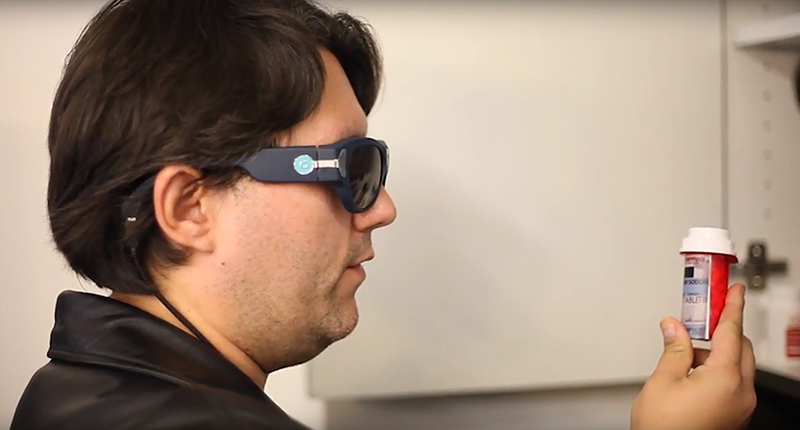While wearable tech has been more of a novelty for most part, new types of wearable technology are changing people’s lives on a daily basis. From making amputees feel the sensation of touch on their prostheses to enabling paralyzed people to walk, wearable tech is making a big impact on our lives. Wearable device makers are now turning their attention to the visually impaired. There are already several wearables in the market that are helping people living with blindness or partial sight. Here are a few of them.
BuzzClip
The BuzzClip is a small and discreet wearable for people living with blindness or partial sight. The device uses ultrasound to detect obstacles that may lie directly in one’s path. It then notifies the user of these obstacles through intuitive vibrations, allowing the user to safely navigate around any objects that they may encounter. The BuzzClip offers essential head level obstacle detection and can be easily held or attached to many forms of clothing, making it a highly versatile and useful device.
Aira AR Smartglasses
Augmented Reality smartglasses developed by La Jolla, CA-based Aira, is designed to help people who are blind or have low vision to read important text, such as labels on medication bottles. Aira is working with AT&T through the AT&T Foundry to develop the solution.
Nearly 60 percent of Americans take prescription drugs. Correctly reading the dosage instructions and other information printed on their labels is very important.
The system relies on Aira’s augmented reality (AR) smartglasses fitted with a camera, which allows people with low vision to talk with a remote agent over a cell phone connection. The agent, who serve as visual interpreters for the blind people, can view the user’s environment through the camera mounted on the glasses, and speak to them through an earpiece.

Read more These Smartglasses Block Out Screens Around You When You Put Them On
Sunu Band
Sunu, a Boston-based wearables manufacturer, recently unveiled a new device that uses a sonar sensor to help blind people avoid people and objects.
The device, which is known as the Sunu Band, vibrates when the sensor detects an object or person 15 feet away, and vibrates more intensely and frequently as an object moves closer. The device retails for $250.
Maptic
Maptic is a wearable navigation system for the visually impaired. Brunel University graduate Emilios Farrington-Arnas designed this collection of wearable devices that vibrate to guide visually impaired wearers to a destination. The maptic set consists of a visual sensor that can be worn like a necklace, and a series of feedback units that can be clipped onto clothing, or worn around the wrist.
The sensor connects to a voice-controlled iPhone app, so it can use GPS to direct the wearer. It does this through a series of vibrations to the left or right side of the body.












